Scientific name: Liatris punctata
Common name: dotted blazing star, dotted gayfeather
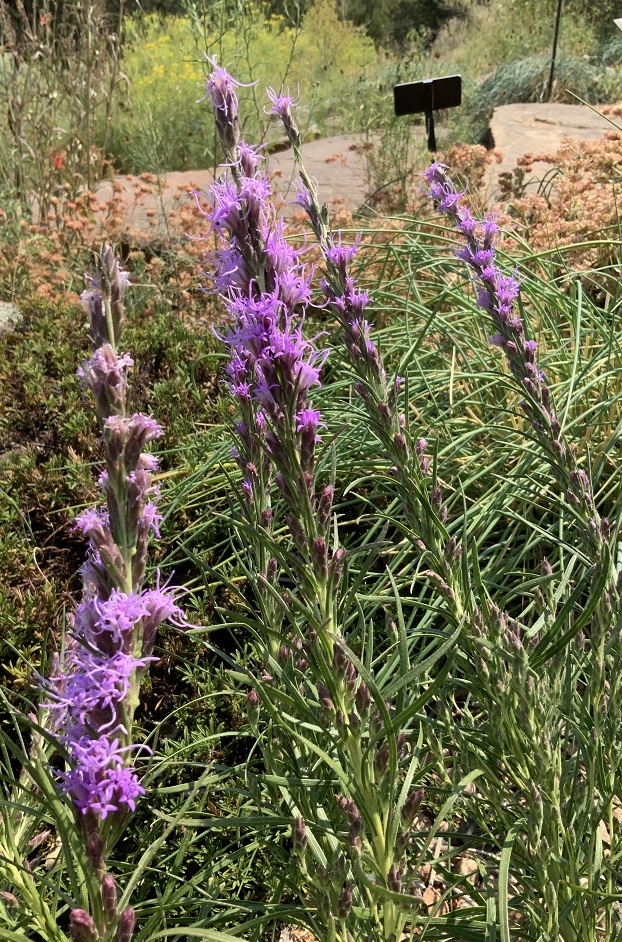
Plant Family: Asteraceae (Aster)
By Monica Harmon
One way to get to know dotted blazing star is by an encounter in its habitat. This might be on the prairie in full sun or on a rocky upland site in northeast New Mexico. If you find yourself outside of New Mexico, do not worry, you may still be able to find dotted blazing star. Its range spans from southern Alberta and Manitoba, to western Missouri, into New Mexico and south to northern Mexico. Wherever you may be, this flower will catch your eye. Its name indicates its beauty: blazing star. Its ample pollen and nectar attract pollinators, so much so that it also attracts pollinator hunters. Folks at the Xerces Society (Society for Invertebrate Conservation) call it a “fantastic butterfly plant”. The pollinator predators may call it a fantastic meal. It may continue to bloom into warm fall weather, depending on the precise site across its wide range.
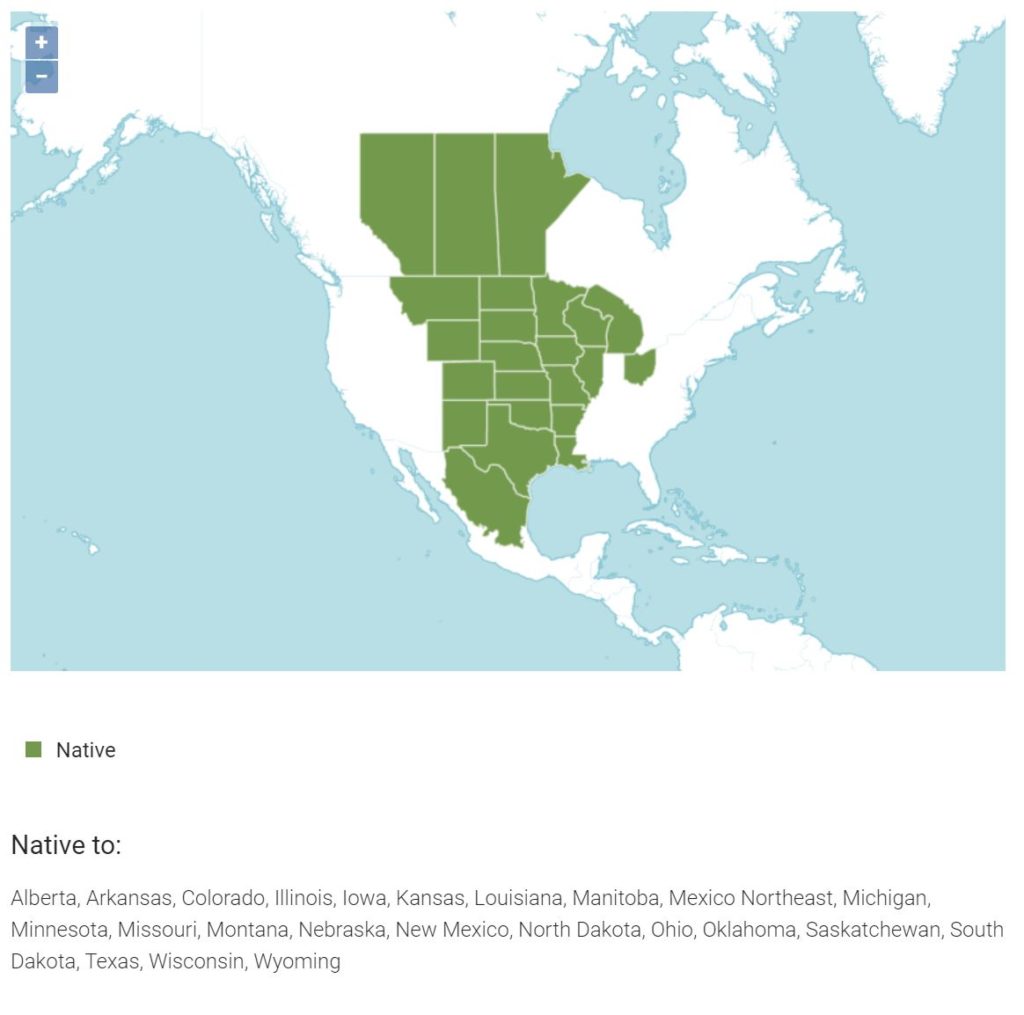
POWO (2023). “Plants of the World Online. Facilitated by the Royal Botanic Gardens, Kew. Published on the Internet; http://www.plantsoftheworldonline.org/ Retrieved 20 August 2023.”
A botanical description of dotted blazing star will guide your understanding of its shape and the shape of its plant structures. It has alternate leaves (one leaf per growth node), and the leaves are numerous and linear (elongated). The flower is pink to purplish pink, and consists of multiple florets at the top of an up to 60 cm (24 inch) tall plant. Stigmal appendages (think, flower tentacles) protrude from the flowers giving a feathery appearance.
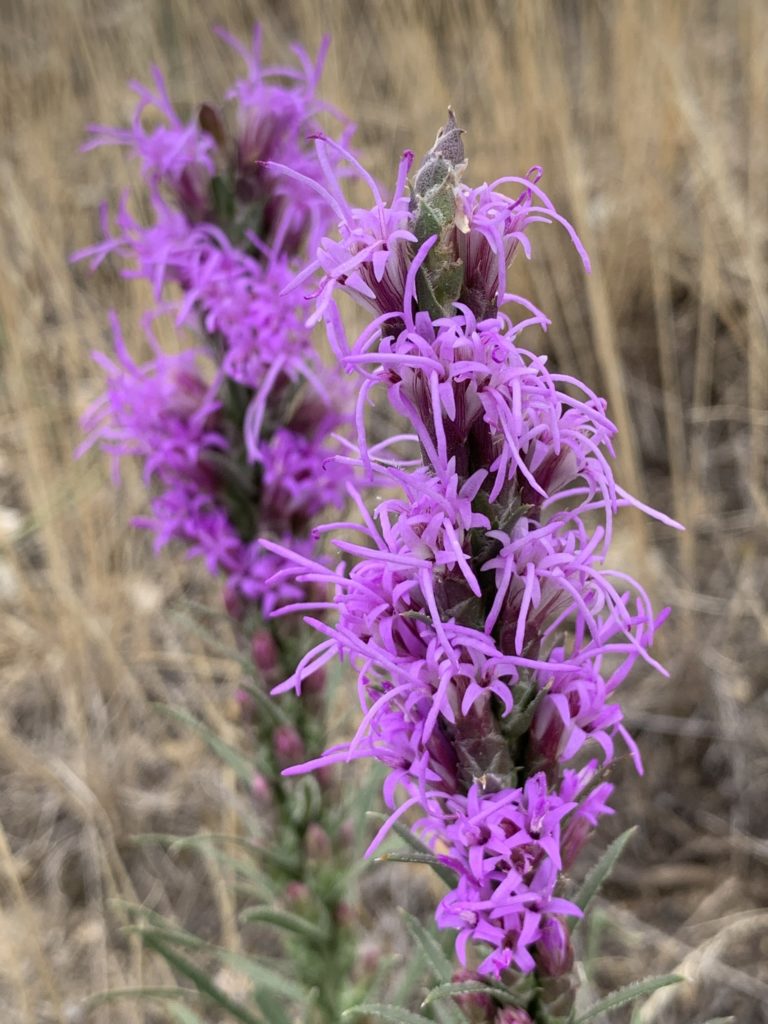
iNaturalist app Observation © palr76 (CC BY-NC 4.0)
These feathery flowers summon pollinators to come have a drink, especially butterflies. A small native butterfly, the Pawnee montane skipper, occurs wherever dotted blazing star does, preferring its nectar above others.
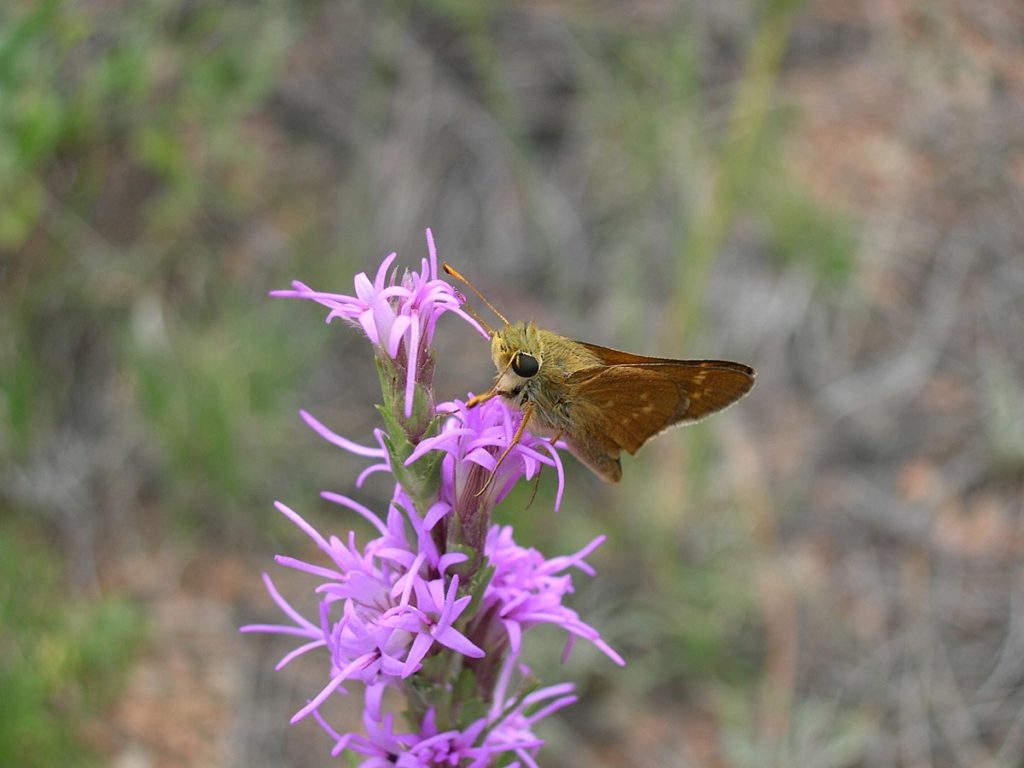
Pawnee montane skipper (Hesperia leonardus montana) is a small, brownish-yellow butterfly with a wing span slightly over 1 inch. The species occurs only in the South Platte Canyon River drainage system in Colorado, in portions of Jefferson, Douglas, Teller, and Park Counties. This butterfly is a member of the Hesperidae butterfly family and is listed as threatened.
Credit: Craig Hansen USFWS
Lastly, the unseen but very important root structure of this plant allows it to thrive in sometimes very dry conditions. The plant may appear average in size above ground, yet its root rockets downward to a meter or longer (5 meters–16 feet–in looser soils!) to access water at these depths.
Do you want to recruit this beautiful species to your yard or green space? Dotted blazing star grows with little water or fertilizer in its natural habitat (including northern New Mexico!). Weeding its space where you will grow them helps ensure their success as this reduces competition while the plant gets established. It may take a few years, but once established the plant will have many flowering stems. After flowering, the plant will still impress with its fluffy white pappus (like an extra fluffy dandelion seed). It is worth your patience to grow.
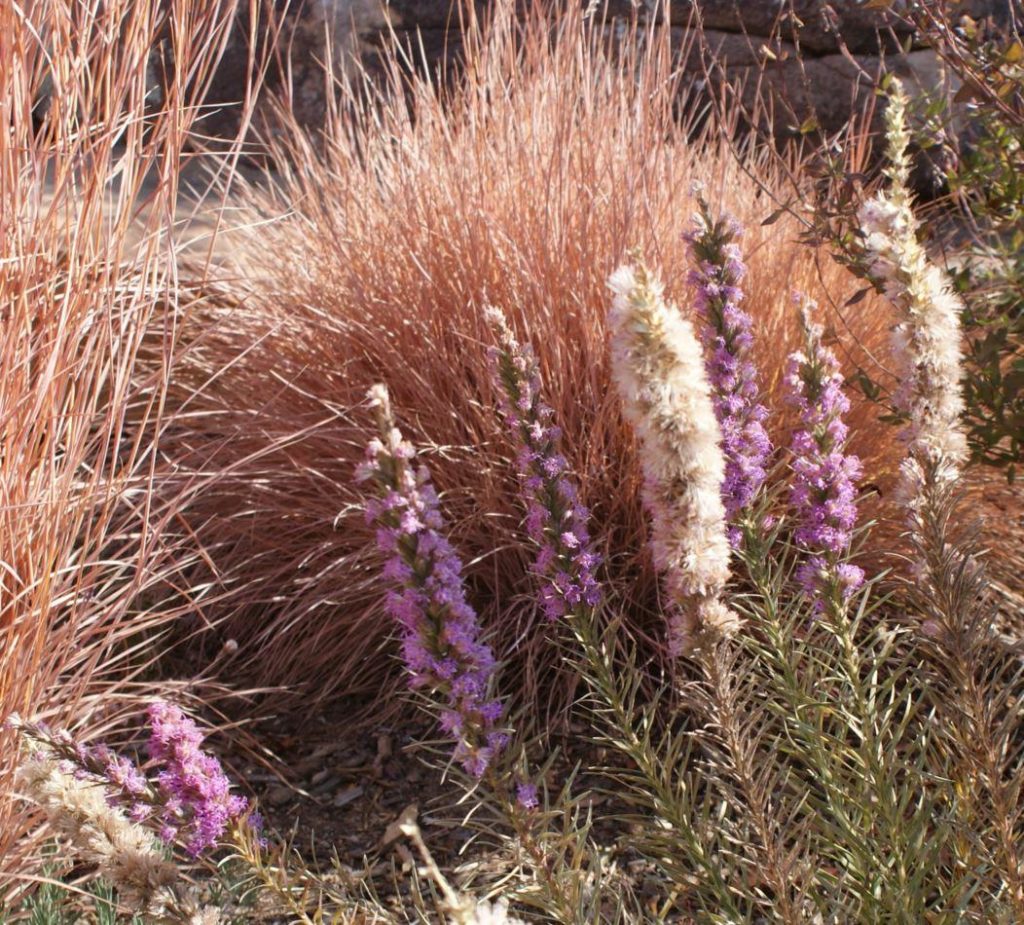
Liatris flowers and seeds in late fall. Photo by Norman Marks.
You will want to cold-stratify your seeds before planting. This mimics nature as seeds may land on the ground in the fall, but lie dormant until spring brings warm, growing conditions. This can be done by keeping your seeds in a bag in the refrigerator with a wet paper towel, moist sand, or potting soil. Excess moisture can rot the seeds, so consider leaving the bag open slightly and keeping the paper towel just moist by checking on it periodically. Leave the seeds in the cold for 3 months to encourage prompt germination in the spring. Seeds are packets of life and are exceptionally well adapted to waiting for the right conditions to grow. Trust them, they know what they’re doing!
References
“Liatris punctata”. Garden Explorer. Santa Fe Botanical Garden. Web. 20 Aug. 2023. Retrieved from: https://santafebotanicalgarden.gardenexplorer.org/taxon-779.aspx.
USDA, NRCS. 2023. PLANTS Database (https://plants.sc.egov.usda.gov/, 08/07/2023). National Plant Data Team, Greensboro, NC 27401-4901 USA.
Xerces Society “Monarch Nectar Plants Southwest” https://www.xerces.org/sites/default/files/2018-05/16-049_01_XercesSoc_MonarchNectarPlants_Southwest_web-3page.pdf


